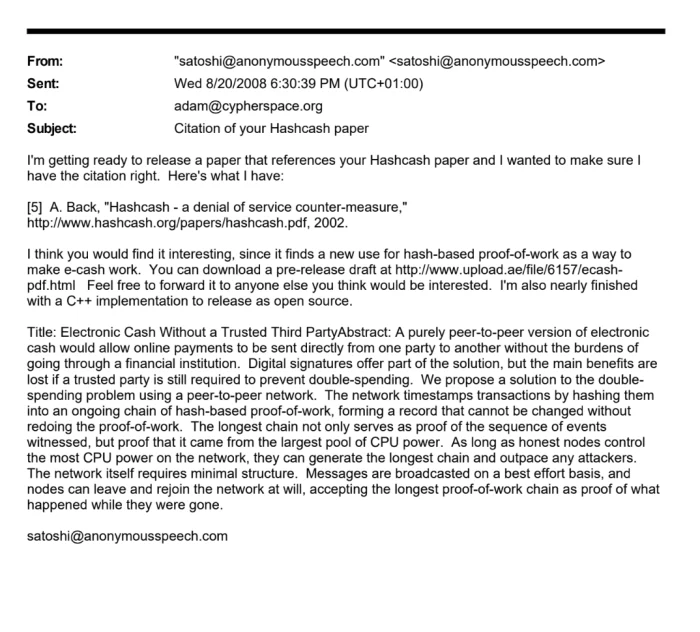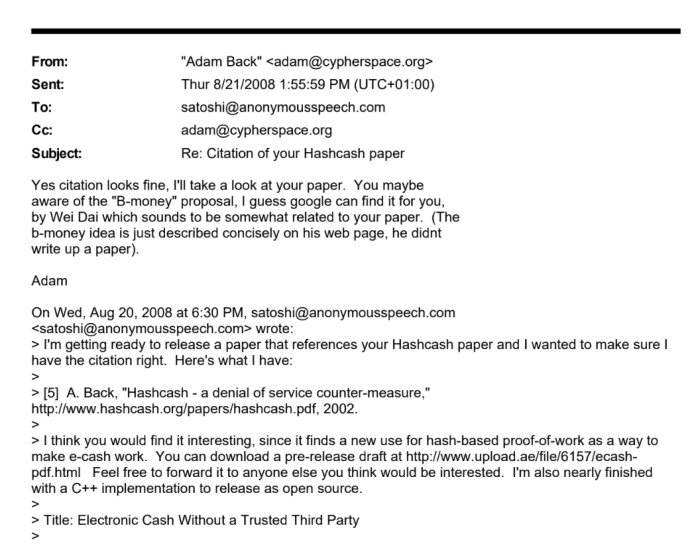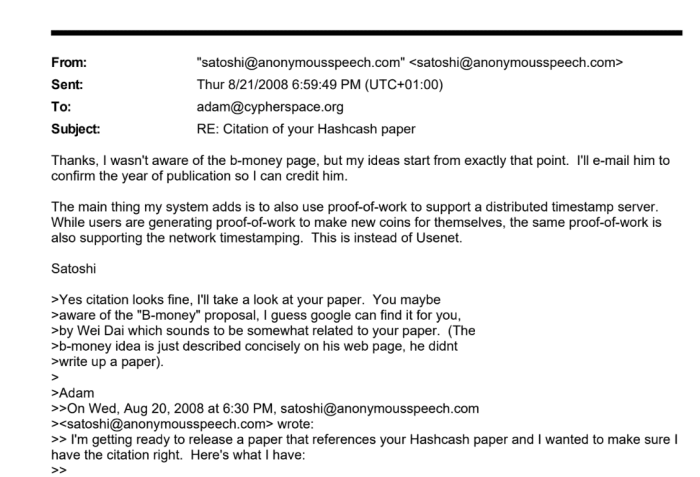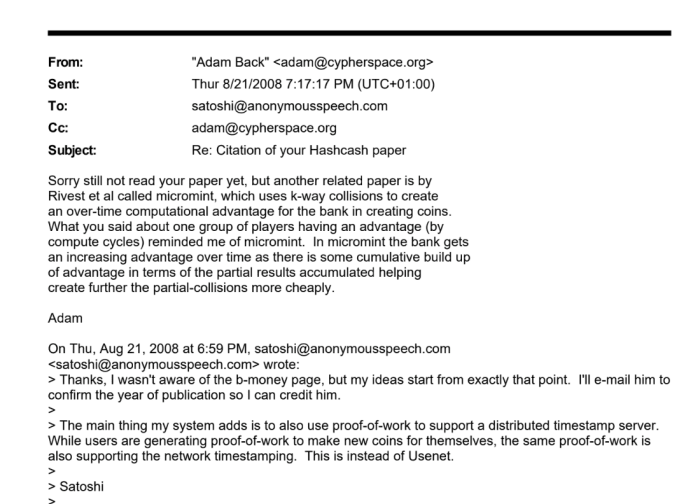The veil of secrecy surrounding Bitcoin’s origins has partially lifted with the release of email correspondence between its enigmatic creator, Satoshi Nakamoto, and cryptography pioneer Adam Back. This historical exchange, entered into official UK court records, offers a rare glimpse into the minds that shaped the revolutionary cryptocurrency.
A Conversation Forged in Code:
The five emails, spanning from August 2008 to January 2009, reveal a polite and professional interaction between two intellectual giants. Nakamoto, acknowledging Back’s seminal work on Hashcash (a precursor to Bitcoin’s mining system), sought permission to cite it in the then-unreleased Bitcoin white paper. Back, in turn, suggested further reading on related concepts, fostering a collaborative spirit.

Beyond Hashcash: Nakamoto’s Unique Fingerprint:
While Hashcash undoubtedly influenced Bitcoin, the emails highlight Nakamoto’s distinct contributions. He emphasizes the novel aspects of his work, differentiating it from existing systems, particularly in its decentralized and trustless nature. This exchange underscores the unique blend of existing concepts and groundbreaking innovations that gave birth to Bitcoin.
Beyond Speculation: Back’s Role Clarified:
Long suspected of involvement in Bitcoin’s creation, Back’s role is definitively clarified by these emails. He appears as a supportive colleague, not a co-creator. This correspondence further weakens claims attempting to link him directly to Bitcoin’s origins.
A Legacy Beyond Identity:
Despite the renewed interest in Nakamoto’s identity sparked by these emails, the true mystery remains unsolved. However, the historical value of this exchange transcends mere identification. It offers a window into the intellectual discourse that birthed a revolutionary technology, showcasing the collaborative spirit and intellectual rigor that underpinned its creation.
A Relic with Echoes:
Although the emails do not definitively solve the Nakamoto puzzle, they serve as a fascinating relic of Bitcoin’s early days. They offer valuable insights into the thought processes of its creator and shed light on the collaborative environment that fostered its development. More importantly, they remind us that Bitcoin’s true legacy lies not in its creator’s identity, but in the transformative potential it holds for the future of finance and technology.

EMAIL #1: SATOSHI REACHES OUT TO ADAM BACK

EMAIL #2: ADAM POINTS TO SATOSHI TO WEI DEI’S WORK

EMAIL #3: SATOSHI NOTES HIS UNIQUE CONTRIBUTIONS TO BITCOIN

EMAIL #4: ADAM STILL HASN’T READ THE WHITE PAPER

EMAIL #5: SATOSHI INFORMS ADAM OF BITCOIN’S RELEASE




